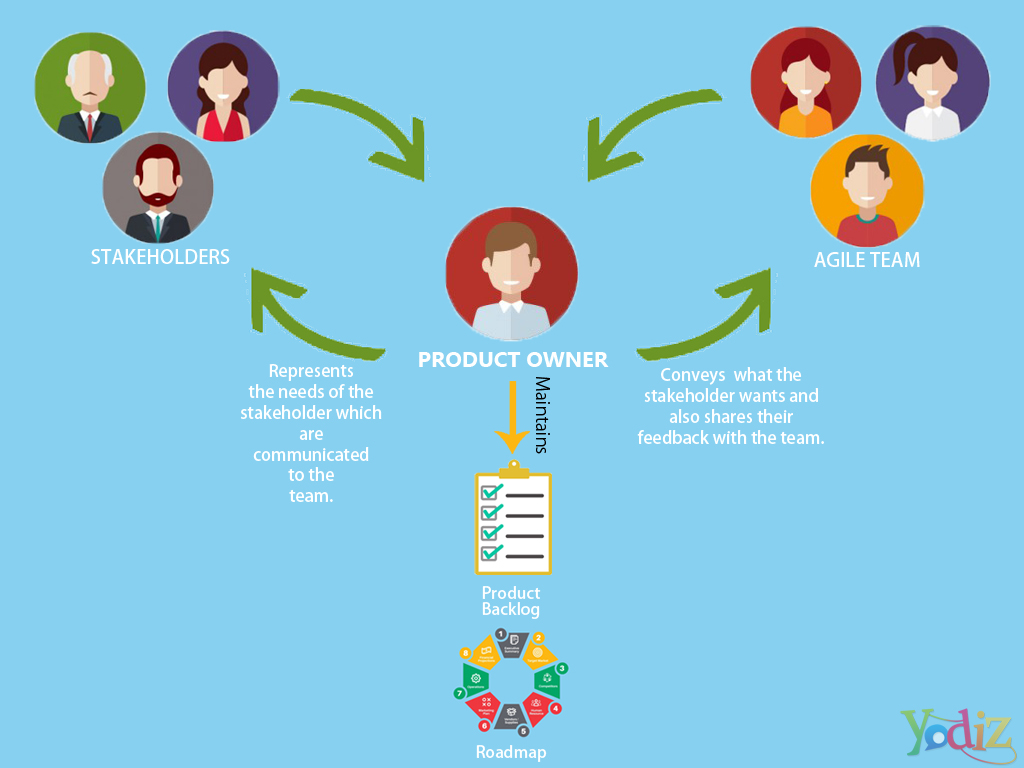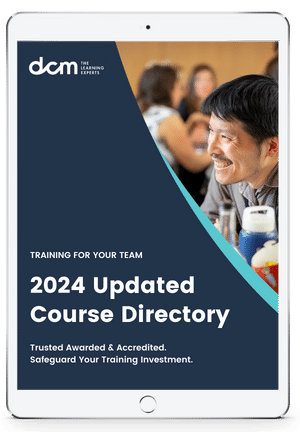A product owner of an agile team is a key role in managing the stakeholder’s needs and is the sole ambassador of the agile team to the stakeholder. They ensure that there is a clear understanding amongst the stakeholders and the agile team. The product owner also demonstrates the final solution to the stakeholders. They are responsible for negotiating and obtaining the funding for the development of the product and then educating the agile team about the business side.

What does it take to be a Product Owner?
A product owner is usually a business analyst, business stakeholder, IT stakeholder or Product Manager. Presenting a strong vision, motivating and heightening the team’s morale is what a product owner should do best. Their commitment and dedication towards attaining the common goal are paramount. This is done by possessing a clear and in-depth knowledge of the market and its users. This shall be conveyed brilliantly by the product owner’s effective and emphatic communication skills.
One of the key responsibilities of a product owner is to regularly interact face to face with the team and the stakeholders including customers. They are also responsible for defining the features of the product.
Role of a Product Owner in an Agile Team
A product owner of an agile team owns the product backlog. They prioritize the features in the backlog that the development team has to complete. The product owner is aware of the pace the teams operate. Thus new requirements are only added once the previous ones are done. A product owner determines the release dates.
A very important tool that helps in making the product owner’s job easy is the agile product roadmap. It is an extensive and highly detailed plan of the things to achieve that spans over a long period of time. It maintains the vision of the product and keeps the stakeholders aware of what will be made. This produces a transparent view that gives the customer an idea of what to expect from the product in the long run. It also gives an idea of how much budget needs to be set for the releases to come.
There are three ways how product roadmaps are constructed. Anyone of these formats can be used, it depends on personal preference.
Goal Orientated
As the name suggests, you list the goals that you want to achieve. Product owners usually list their end goals. They list product features in the form of Epics as well. This supports thinking about the most valuable and important things that need to be done. Which maintains focus. It presents a general overview of what the product would become. You can write the dates or leave them out, your choice.
Now-Next-Later
This roadmap format breaks down the tasks that are being done now, what will be done next and later further ahead in time. But this is more feature centric rather than goal-centric. You can not list the dates or timelines.
Story Map
It presents an overview of what needs to be done. It is good for providing a starting point without worrying too much about listing all the features and goals.
Product Owner & Scrum Master Reviews: Stories from Our Customers
Over the past 2 years, almost 3,000 learners (2,819 to be exact) have come to DCM to learn more about scrum and get certified. Read (and watch) their reviews to see how our courses have helped them achieve their career goals.
Inhouse Tailored Training for Your Team
We provide training programs that are developed by industry, for industry. Our range of programs can be delivered in a way that suits the needs of your business to offer your employees learning that is accessible and flexible.
We add value to your business by providing specialised, flexible and scalable training that meets your training needs. As your workforce grows and evolves, our globally certified and industry-validated learning solutions can assess, train and qualify your employees. For more information on how we can help please visit the in-house training page.
Membership, Stay Connected. Stay Relevant.
Completing a program is a point-in-time exercise that delivers huge value, but there is a next step to maintaining the currency of your skills in the ever-evolving professional world.
Membership is the next step.
A unique platform, membership is designed to ensure that you are in tune and up-to-date with the latest tools, trends and developments. Being a member provides just-in-time training and continuous professional development, and an exclusive and evolving content library informed by subject matter experts and industry leaders.







